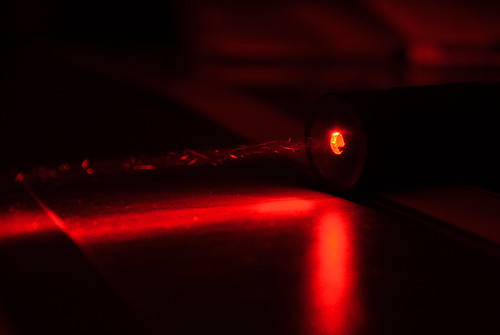Whatever the reason, it doesn’t mean you can’t practice anyway and continue mastering the mechanics and principles of basic marksmanship or even defensive tactics. Here is a rundown of a few different methods used by novices and professionals alike to help you on your quest to firearm supremacy.
Dry-fire
While pretty basic, dry-fire practice is essential to excellent marksmanship and handling. Before beginning I suggest investing in dummy rounds like “Snap Caps” designed to protect your firing pin during dry fire. Excessive dry firing without the firing pin actually hitting anything to absorb its energy can cause unnecessary stress to the pin and weaken it.
When practicing dry fire, there are a couple areas you’ll want to focus on including drawing the pistol itself. After the draw of course take a moment to make sure your grip is sufficient before moving on to the most important aspect and main reason for dry-fire practice.
Keep an eye on your sights and practice squeezing your trigger while achieving as little movement from the sights as possible. Don’t get discouraged if you see more than you’d like. The main point of this drill is to help you improve your grip.
If you have a revolver, simply pulling the trigger is enough. If your semi-auto is hammer-fired then simply pull the hammer back; everything is sufficient enough without having to rack the slack. If your semi auto is striker fired, you can pull the slide back halfway to reset the trigger. Using a target or an object to aim at will help have a point of reference to truly see how much your sights move.
Airsoft Guns
Now I know what you might be thinking: those things are toys! And you’re not entirely wrong. While I certainly wouldn’t put one in the hand of a small child without supervision, airsoft guns have come a long way and can provide experience you can’t get with actual firearms.
On the topics of kids and firearms, airsoft and bb guns are great ways to introduce young ones to the fundamentals of operating a firearm. From safe handling to aiming and all in the comfort of your own backyard. Unlike BB or pellet guns, airsoft guns can be used like paintball guns for matches or even training in house clearing and other scenarios.
Get a few friends to invest in airsoft versions of their carry arms, don some paintball masks, and find a spot to practice in and you’ll soon see how good your aim and draw are under pressure.
Running different drills like having someone charge you and see if you can draw and fire in time are great ways to improve your confidence and find what you need to improve one.
You can even go as far as airsoft proofing your own house every once in a while (blankets over TV’s, removing fragile items that might get damaged by the plastic pellets, etc) and running drills inside the place you’ll want it the most.
Airsoft guns, while not as accurate as actual firearms at distance, are still plenty accurate enough at closer ranges where you’ll most likely be engaging offenders.
For the most effective practice look into gas or electric airsoft replicas of your current carry or arm or something similar. You may not be able to find the subcompact version but as close as you can get will be sufficient. Many models also offer blowback features and operate just like the real deal would.
Lasers
Lasers excel as showing you how much your barrel moves while practicing your trigger pull and where you’re aiming at from the draw.
Activating your laser and practicing your draw will make sure your first shot goes where you need it to. Don’t just draw on a blank wall though. Hanging a target or picking an object as your target is where you’ll get the most benefit.
Arguably practicing your trigger squeeze and watching what happens to the laser will improve your accuracy and trigger control more than firing at a range. If you can squeeze the trigger with as little movement to the laser as possible you’ll be a crack shot on paper.
Laser Training Systems
On the subject of lasers there are a multitude of “dry-fire laser trainers” on the market currently. Some of these systems range in price from the cost of an actual laser for your firearm to much higher.
Many of these systems allow you to use them in conjunction with an app for your phone to track your performance as well as different modes of practice. There are even systems that offer feedback as to what might be causing your inaccuracy based on performance.
Laser training systems are an excellent investment for those who want to seriously improve their overall technique and trigger control from the comfort of their own home. They’ll allow you automatically track all of these aspects you would be trying to visually track with just a laser or dry fire practice alone.
Final Thoughts
Whichever method you choose to practice, you’re moving in the right direction. Simply having a firearm and qualifying once with it is not enough for a defensive situation. By choosing not to practice, you put yourself and others at risk.
When considering which method you’d like to start with ask yourself what you’re hoping to improve upon. If trigger control and accuracy are priorities at the moment, then a laser or laser system would be beneficial. If you’re looking to test yourself in realistic scenarios against others, then consider buying a few airsoft guns (and proper eye safety) to run more realistic scenarios and practice tactics.
Much like with anything in life, practice is essential for competency and to hone your reflexes. As always when handling any weapon, ensure it isn’t loaded and don’t have any loaded magazines nearby to prevent any accidents. Good luck!


